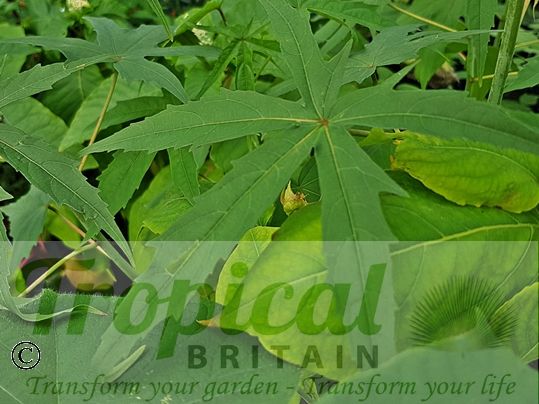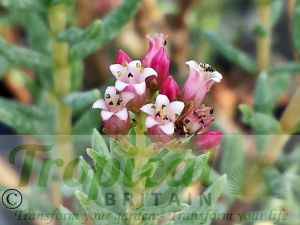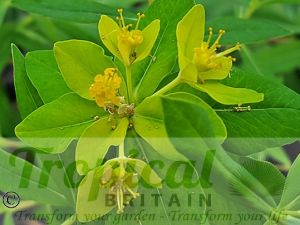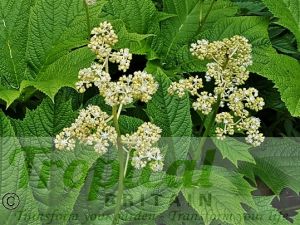Hibiscus coccineus
Hibiscus coccineus, Scarlet Rosemallow, is a quick-growing Hibiscus native to Florida but is now naturalised over much of the other American southeastern states. It rapidly forms a large leggy shrub but in fact is a perennial and - like Hibiscus moscheutos - it dies down in late autumn. It is not as hardy as Hibiscus moscheutos however and for it to stand any chance of surviving in your UK garden with its regular drastic plummets to sub-zero temperatures it really needs to be both in a warm, sheltered south-facing location and mulched heavily during the winter months. The best aspect would be in a sheltered warm microclimate with a combination of overhanging protection with enough clearance for the sun's rays to keep it basking in tropical warmth in the summer.
Did I mention wet feet? No, not your own wet feet at the thought of yet another winter will-it-survive challenge... it's roots need to be kept moist at all times - even through the driest summer. It is not very likely you will have a large boggy area right up against that warm south-facing wall of yours so be prepared to give it regular hosings in the summer months. And liquid potash-rich feeds... well, you want it to flower, right? If I am giving you the impression that Hibiscus coccineus is something of a prima donna requiring all your exotic-gardening skills acquired over many years then that is good. Best to know what it is you are up against rather than passively accept defeat after an ill-equipped and badly-fought campaign. Another perhaps less-demanding approach would be to grow it in a large container and bring it into a warm frost-free environment in autumn - although opting for the thick mulch would still be a good idea.
One or two other things to mention: the foliage - particularly the younger more narrow foliage - has a startling resemblance to that of a certain illegal class B drug... so it might be a useful thought to keep it labelled and retain a copy of your order receipt - just in case you get an unexpected visit. Paranoid? wot??
The other annoying thing is there is a certain amount of taxonomic confusion over this species with The Plant List calling it a synonym of Malvaviscus arboreus. Yet Kew Science and Missouri Botanic Gardens - the two major contributors to The Plant List - both list it as a distinct species. They sure look like two different species to me so it would be good to have a definitive taxonomic update on this... anyone?
If all this has put you off a bit that's probably a good thing - we only have a very limited quantity.
Additional Information
| Order | Malvales |
|---|---|
| Family | Malvaceae |
| Sub-Family | Malvoideae |
| Synonyms | Hibiscus coccineus var. integrifolius, Hibiscus integrifolius, Hibiscus semilobatus, Hibiscus carolinianus, Hibiscus speciosus |
| Geographical Origin | USA: Florida; naturalised in other southeastern states |
| Cultivation | Full sun. Fertile, wet soil. Warm, sheltered, sunny location. Water well throughout the summer and apply liquid fertiliser. Mulch heavily in winter after it has died down. Cut back |
| Eventual Height | 2m |
| Eventual Spread | 1.5m |
| Hardiness | Herbaceous perennial but even in the south of the UK needs to situated in a warm sheltered aspect and mulched heavily throughout winter. Protect new growth from late frosts. Praying to the gardening gods is also said to help |

Free DELIVERY
ON ALL ORDERS OVER £99THIS OFFER IS VALID ON ALL OUR STORE ITEMS.

![Hibiscus coccineus - licensed under Creative Commons: i_am_jim [CC BY-SA 4.0 (https://creativecommons.org/licenses/by-sa/4.0)], from Wikimedia Commons Hibiscus coccineus - licensed under Creative Commons: i_am_jim [CC BY-SA 4.0 (https://creativecommons.org/licenses/by-sa/4.0)], from Wikimedia Commons](https://www.tropicalbritain.co.uk/pub/media/catalog/product/cache/170722e8202d08ddd67af96921ce2854/2/0/20180427161521_texas_star_or_scarlet_rose_mallow_--_hibiscus_coccineus-crop-web.jpg)












